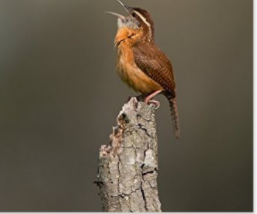
This is my dog, Sherlock, looking forward to fetching the tennis ball I hold; all attention.
Like many animal lovers I feel empathy for him and I think he feels empathy for me, communicating awareness the same way I do. Is this mere anthropomorphism, or is something true and deep-seated represented? What do we share that might be the basis for this mutual understanding?
In Chapter 3 of my book, Animal Vocal Communication: Assessment and Management Roles, I suggest a basis: our shared reliance on vocal size substitution (VSS). VSS means the size of the vocalizing animal can be represented by the sound it produces and can therefore represent its body size to a listener, who may not be in visual contact; that is, the sound can substitute for the body size. We know a bass drum’s sound will differ in predictable ways from that of a much smaller snare drum. That’s all VSS is; a sound’s frequency can signify the size of its producer, a product of the physics of sound production.
VSS began to underlie communication a long time ago in the first amphibians. Today, frog and toad calling to attract mates and repel rivals reveal its primary use. Amphibians grow throughout their lives so males of varying size compete for mates. Larger ones call with deeper voices than smaller ones and experiment shows voice alone can do the job of repelling a small one. Females choose larger mates based on their deep voices. As is the case in all animals, bigger frogs can beat smaller ones in fights and VSS can resolve disputes without a fight; herein lays the origin of vocal communication and a major source of natural selection that promoted it.
But surely the empathy between me and my dog is too complex to be based only on frog diplomacy? Me, my dog, and all other mammals and birds share a characteristic lacking in amphibians—we are warm-blooded and this trait sets a limit to how large we become; we stop growing at maturity, there are no huge old adults and teeny weeny growing adults. Adults are adults and size differs much less among them than in amphibians, bringing about a new facet to communication—motivation. With motivation added, VSS morphed into what I call motivation-structural rules. If angry, and you choose to communicate instead of fight, you use the “I am big” sound just as frogs do but if you want to associate or placate you use the “I am small, harmless, and nonaggressive” sound. We are familiar with these in our pets and in the quality of our speech as the growl and the whine, respectively. And here, in motivation-structural rules, is where our empathy is shared with all other warm-blooded creatures. We do indeed understand each other at this level.
I will explore these ideas in more detail but here I will end with the question “why has this simple idea been under the radar?” A quick answer is because for too long the search for information has impeded research on how the form and the function of vocalizations relate to one another in animal communication.
Animal Vocal Communication: Assessment and Management Roles by Eugene Morton
Latest Comments
Have your say!